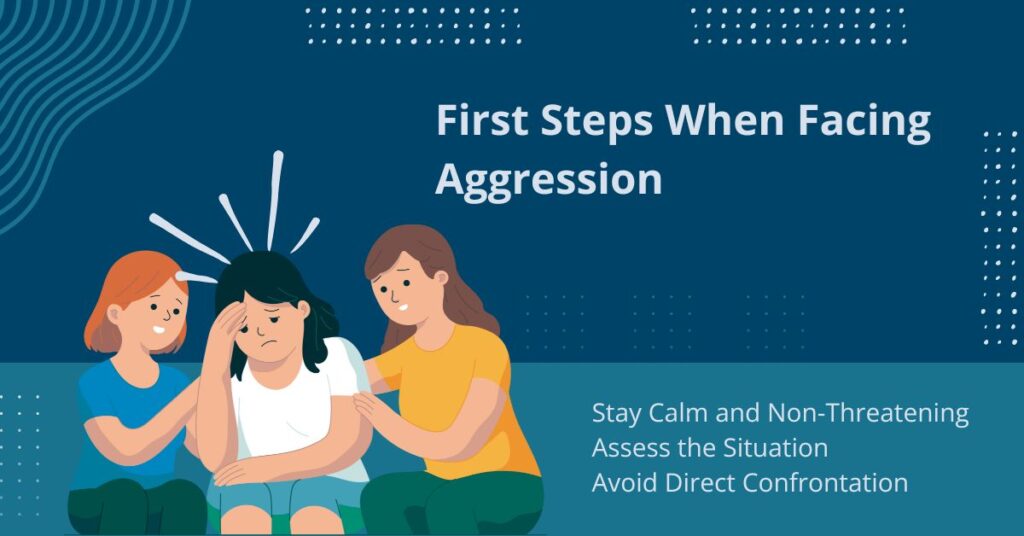Handling someone who is psychotic and aggressive is never easy. It can feel scary, sudden, and confusing. The person may shout, act out, or seem lost in their world. You might not know what to do next. However, there are safe and innovative ways to address this.
First, try to stay calm. Do not argue or make fast moves. Look for signs such as fear, anger, or unusual speech patterns. These can mean the person is in a mental health crisis. You need to keep yourself and others safe.
This guide will help you do that. We will examine psychosis, why it may cause aggression, and what steps to take when it happens. You will also learn how to seek help, communicate calmly, and find long-term support. This is about care, safety, and the right kind of action.
Understanding Psychotic and Aggressive
Several factors can trigger psychosis. Mental health disorders like schizophrenia or bipolar disorder often lead to psychotic episodes. Substance abuse, trauma, or even sleep deprivation can also cause psychosis.
Sometimes, medical conditions like brain injury or infections can play a role. Each cause affects the brain in different ways, leading to distorted thoughts, feelings, and, at times, aggression. Understanding the root cause helps manage these episodes more effectively.
Now you may be wondering what psychotic is?
Psychosis is a serious mental health condition. A person with psychosis loses touch with reality. They may hear voices, see things that are not there, or believe things that do not make sense.
These are called hallucinations and delusions. When someone is going through this state, they may feel scared or confused. They may not know what is real and what is not.
What causes psychosis?
Many factors can lead to psychosis. It may be associated with mental illnesses such as schizophrenia or bipolar disorder. Occasionally, it is triggered by drug use or severe stress. In certain instances, it can also result from sleep deprivation or a medical condition.
How Is Aggression Connected?
Not all people are psychotic and aggressive. But during psychosis, a person may feel trapped or threatened. And this fear can lead to aggressive behavior. They may scream, push, and even become violent. This is not because they are bad. It is because they are suffering from deep pain.
Warning Signs to Watch
Here are some common signs:
- Sudden mood changes
- Talking to things that aren’t there
- Confused or jumbled speech
- Angry outbursts without an apparent reason
- Strong fear or paranoia
If you can recognize these early, you can quickly help the person being attacked. Aggression in mental illness can be scary, but it is often a call for help. When you understand what’s happening, you’re better prepared to manage the situation with care and calm.
First Steps When Facing Psychotic and Aggressive

It’s best not to argue or correct a psychotic and aggressive person. This can make them feel attacked. Instead, speak gently and maintain a calm demeanor, avoiding intense eye contact. Stay calm and give them space. Your goal is to reduce tension, not to win a debate or prove a point.
Stay Calm and Non-Threatening
When someone is aggressive, staying calm is key. It’s easy to get scared or upset, but your calmness can help defuse the situation. Avoid raising your voice or making sudden moves. Maintain a relaxed and non-threatening body language. If the person sees that you are calm, it might help them feel safer and reduce their aggression.
Assess the Situation
Before reacting, take a moment to assess what’s happening. Is the person responding to something specific, like a sound or a situation around them? Is it just a moment of frustration or something more profound, like confusion? Understanding the problem can help you decide what to do next. Knowing when to step in and when to get help is crucial.
Avoid Direct Confrontation
Confronting an aggressive person directly can escalate the situation. Arguing or trying to correct their thoughts may increase their confusion and fear. Instead, offer a calm, soothing presence. Use simple, clear language to explain things, without challenging their beliefs or perceptions. Sometimes, simply being present and speaking softly can make a significant difference.
Creating a Safe Environment in Psychotic and Aggressive
Creating a calm space is vital when managing aggression. Remove distractions and avoid overcrowding. A quieter, more open area helps reduce stress and fear. Ensure that both you and the person feel safe by maintaining a safe distance and ensuring there are no obstacles that could exacerbate the situation.
Remove Potential Triggers
Aggression in a psychotic episode can be made worse by external triggers. Loud noises, unfamiliar faces, or a crowded space may increase stress. Try to remove anything that might be causing distress. If possible, move the person to a quieter, more comfortable area. Reducing sensory overload can help calm them down.
Safe Space for Both Parties
Your safety and the safety of others are top priorities. Always keep a safe distance. Make sure there are no objects that could be used as weapons. It’s essential to stay close enough to offer support but far enough to avoid harm. A safe environment helps lower the chances of physical damage.
Physical Space Management
Keep the environment spacious and uncluttered. A crowded or small space can cause a sense of entrapment, increasing feelings of fear and aggression. Keep your movements slow and purposeful, which may also help the person feel less threatened. The more space you create, the more control the person may feel over the situation.
Verbal De-Escalation Techniques
In such situations, using simple language is crucial. Speak slowly and calmly to avoid overwhelming the person. Maintain a friendly and gentle tone, using concise and straightforward sentences that are easy to follow. This approach makes it easier for the person to understand you and reduces their anxiety.
Using Simple, Clear Language
When someone is in a psychotic state, complex sentences or quick speech can confuse them more. Use short, precise phrases. Speak slowly and calmly, using simple words they can easily understand. Keep your tone soft and steady. This can help them feel less overwhelmed and more willing to listen.
Avoiding Arguments
Arguing can exacerbate tense situations. Don’t challenge the person’s beliefs or perceptions, even if they seem unrealistic. Instead, acknowledge their feelings and guide them to a more peaceful state. Stay empathetic, saying things like, “I understand you’re upset, but we can work through this together.”
Active Listening
Listening is just as essential as speaking. Let the person express themselves without interruption. By actively listening, you show them respect and help them feel heard. Acknowledge their emotions and mirror their words to foster a sense of rapport. This can create a connection that calms their mind and eases the tension.
Professional Help and Intervention for Psychotic and Aggressive

When things feel beyond your control, reaching out for help is crucial. Mental health professionals can provide the proper guidance and support. If the person’s behavior escalates or becomes dangerous, don’t hesitate to call emergency services. Getting help early can prevent a situation from worsening and ensure safety.
Know When to Call for Help
In some cases, handling aggression and psychosis alone can be dangerous. If the person’s behavior escalates or you feel unsafe, it’s time to call for professional help. Mental health professionals, such as therapists or psychiatrists, can offer support. If necessary, don’t hesitate to contact emergency services.
Involving Mental Health Professionals
Mental health professionals are trained to deal with psychosis and aggression. They can help diagnose the underlying causes and recommend appropriate treatment.
A therapist or counselor may offer strategies for both immediate intervention and long-term support. This ensures that the person receives the care they need.
Are you seeking support? Our dedicated therapists and psychiatrists are here to help. Visit our page to discover how we can help you achieve well-being. Take the first step today.
Emergency Services
If the situation becomes dangerous or you are unable to manage it safely, call emergency services. Trained responders, such as crisis intervention teams (CIT), are experienced in handling mental health emergencies. They can provide immediate assistance and ensure the safety of everyone involved. In severe cases, hospitalization might be necessary.
Long-Term Management and Support for Psychotic and Aggressive
Ongoing support is key to managing psychosis and aggression over time. Building a network of trusted friends, family, and professionals helps provide a sense of stability and security. Regular therapy sessions, along with medication when necessary, can significantly reduce aggressive outbursts. The more support available, the easier it becomes to manage the condition.
Building a Support Network
Ongoing support is essential for both the individual and their loved ones. A strong support network can include family, friends, and mental health professionals. Regular check-ins, therapy sessions, and having someone to talk to can help manage the condition in the long run. Support offers stability, which can reduce future episodes of aggression.
Therapeutic Approaches
Psychosis and aggression often require long-term management through therapy. Cognitive Behavioral Therapy (CBT) can help individuals reframe negative thoughts and reduce aggressive behavior. Medication, prescribed by a doctor, may also play a role in managing symptoms. Therapy helps individuals understand and cope with their emotions, preventing aggressive outbursts.
Frequently Asked Questions
What should I do if someone becomes aggressive during a psychotic episode?
Stay calm, create space, use simple language, and avoid confrontation. Seek professional help if the situation becomes more severe.
How can I recognize early signs of psychosis?
Look for confusion, paranoia, unusual speech patterns, and changes in mood. Early intervention is key to preventing aggression.
Is it safe to confront someone aggressive and psychotic?
No. Avoid confrontation. Stay calm, maintain a safe distance, and communicate with empathy.
When should I call for professional help?
If aggression increases or the situation becomes unsafe, contact a mental health professional or emergency services immediately.
Conclusion
Handling someone who is psychotic and aggressive requires patience, understanding, and the right strategies. Recognizing the signs early and staying calm can prevent escalation. Creating a safe environment and using verbal de-escalation techniques are essential tools in these situations.
While immediate intervention is crucial, long-term management involves building a solid support network, seeking professional help, and ensuring the safety of both the individual and the caregiver.
Remember, dealing with aggression during psychosis is not about control, but about compassion, clear communication, and ensuring everyone’s well-being. Always seek professional guidance if necessary to navigate these challenging situations effectively.




